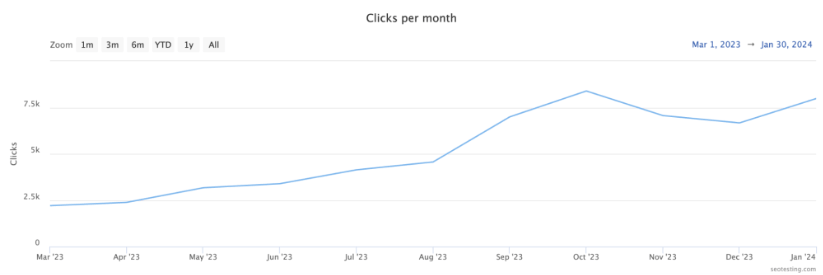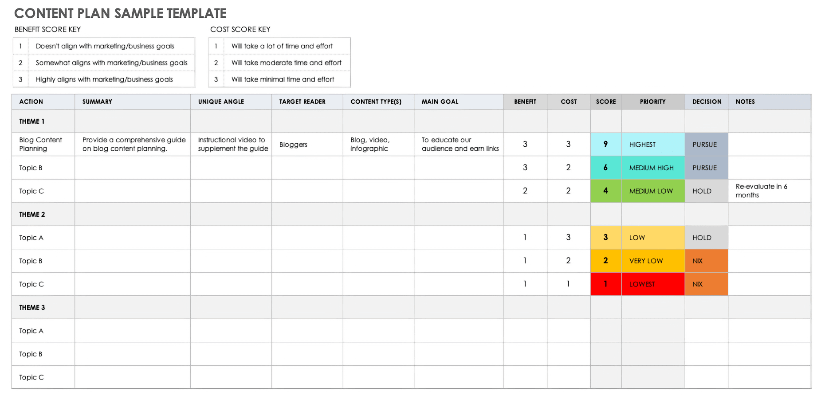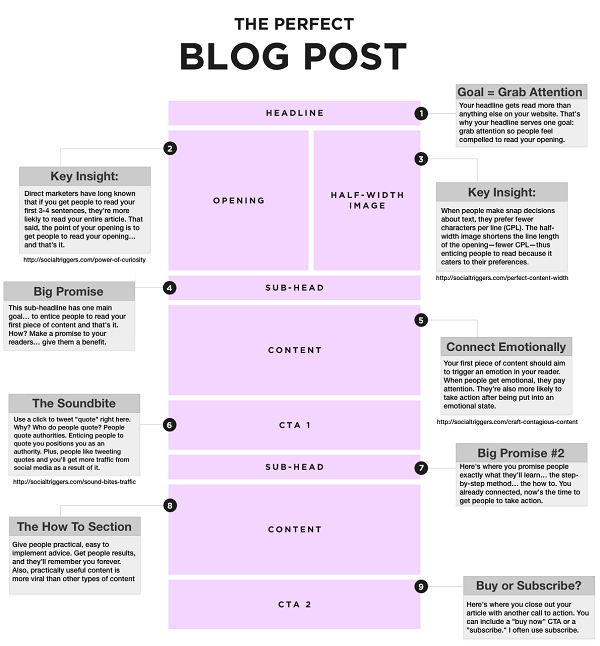When a business starts getting serious about content publication, as it repeatedly shows to be a great way of bringing new customers onto your website, the people involved in this process ask questions.
Those questions... What should a content plan look like/include? And how do I go about creating one?
In this article, we will answer both of those questions. We've got great experience in content planning and publication, and we've used these processes to grow our traffic by 234% in the past nine months.

So, let's dive right into it.
What is a Content Plan?
A content plan is a document that outlines the strategy, topics, formats, and schedule for creating, publishing, and managing any form of content that you, as a business, publish. This could include blog posts, videos, social media posts, and podcasts. This is all documented to help the content hit your business's goals.
A content plan for a business will serve as a comprehensive roadmap that guides marketers and content creators through producing engaging and, more importantly, effective materials tailored to their target audience. It will detail the key themes and messages to be communicated, identify the most appropriate and impactful content formats, and establish a timeline for distributing content across platforms.
This strategic document will not only align with your business' marketing goals but also address the needs of your audience, ensuring that the content resonates and drives the desired actions, such as:
- Increasing brand awareness.
- Generating sales leads.
- Fostering community engagement.
By planning content, businesses can maintain a consistent and cohesive brand voice, allocate resources (time and money), and measure the success of their content marketing efforts against their objectives.
Smartsheet has some great content plan templates that you can download:

How to Create a Content Plan
We'll use this next section to outline the steps you need to complete when building a content plan for your business.
Step 1: Build Out a Content Strategy
When you, as a marketer or content creator, start building a content plan, you first need to build a content strategy. This will consist of an audit of your current content and an analysis of your biggest content needs.
You need to audit your current content to know what is already on your site and how well this is performing. This is vital as it will ensure you do not accidentally duplicate content.
And, of course, you must analyze content needs to prioritise what content will go on your new content plan!
You can immediately move on to step 2 if you have already done this.
The Current Content Audit
To conduct a current content audit, start the process by gathering an inventory of all of your existing content across different platforms, including:
- Websites.
- Social media.
- Newsletters.
- Podcasts.
And anything else you have published online. You must then categorize this content by type, topic, and format and assess each piece's performance based on engagement rates, rankings, and conversion data. Identify content gaps, outdated information, or underperforming pieces, as this will help you analyse your content needs.
This process helps you understand what content resonates with your audience, aligns with your business goals, and requires optimization for better performance.
Analysis of Content Needs
Analyzing your content needs involves thoroughly understanding your business objectives, target audience, and the competitive landscape.
Begin by noting your marketing goals, then research your audience's preferences, pain points, and content consumption habits. Conduct a competitor analysis to identify content opportunities and gaps in the market. Use this information to determine the types of content that will best engage your audience and support your business goals. Consider factors such as the preferred content formats, topics that resonate with your audience, and the channels that will be the most effective for distribution. This analysis will guide the development of a strategic content plan that addresses your business's unique content needs.
You can use the audit of your current content, and the new content analysis needs to outline a full content strategy for the next six, twelve, or eighteen months of content for your business, depending on your preferred publishing cadence and business type.
Step 2: Create Content Templates
Once you have outlined your content strategy, the next step is to create templates for the content you will be publishing. For most businesses, this means you will need templates for:
- Blog posts.
- Social media posts.
- YouTube videos.
- Email newsletters.
Some businesses will have more/fewer content types than the above, but the above will suit most businesses looking to grow online.
Content templates are incredibly useful for businesses looking to grow online, as they will allow you to keep your publishing cadence high.
SEOTesting has used this to stick to a blog post publishing cadence of (approximately) two new blog posts per week, each week, for the past nine months. Of course, this changes depending on staff availability, but this general rule of thumb works for us.
The goal of a content template is to allow anyone tasked with working on a specific content piece to log in and see what they need to write. Let's say, for example, that I am writing a new blog post. If I log in to my Google Drive and see a full content template for the blog post I am supposed to write, this will help me exponentially with the speed I can write.
Content templates can come in written documents, or you can use image-based templates so your staff know how to structure content. This is a good example:

Step 3: Find Your Unique Angle
This is a short step, but it is a very important point to make.
Any content your business publishes online, whether a new blog post, a social media post, a video for YouTube or a podcast featuring a guest interview, you need to ensure that this content has a unique angle that will resonate with your audience.
It will not be enough to research what is currently ranking and write a better version for a blog post, as it was just a few short years ago. You now need to go further. In the age of Google's focus on E-E-A-T and various Helpful Content Updates, you must ensure your content is relevant, engaging and helpful!
Step 4: Assign Tasks & Deadlines
A content plan would be worthless if it did not include information about who is responsible for each task's roles and deadlines.
For example, when we are creating a blog post, there are several different jobs to think about:
- Content research.
- Draft.
- Editing.
- Final draft.
- Publishing.
There are a lot of steps to think about, and the likelihood is that multiple people will need to be involved in this process. Noting down who is responsible for each job will help the people in your marketing team decide what jobs need to be done, by whom, and when they need to be completed.
Step 5: Schedule Content in Advance
Scheduling content in advance is beneficial as it ensures a consistent and strategic approach to delivering content to your customers and prospective customers. It will also help you align your marketing objectives with your audience's expectations.
This planning allows you to be thoughtful regarding the content you publish across various platforms, ensuring that messages are coherent and timed to maximise impact. It also enables teams to allocate resources more effectively, manage workloads, and avoid last-minute rushes.
It's also worth noting that scheduling content ahead of time provides you with the flexibility to adapt to unforeseen circumstances or trends while maintaining a steady flow of communication with your audience and leads.
You can use tools like Buffer to schedule on social media, popular CMSs like WordPress have scheduling tools for blog posts, and YouTube also allows you to schedule content in advance.
What Should a Content Plan Include?
This final section will summarize what should be included in your content plan. Of course, this will be different for each business, and some businesses will need to include things that others don't, but the below are what we consider as "non-negotiable" to be included in your content plan.
Topic Summary
Your topic summary is a brief outline that describes the main idea, themes, and key points covered in a specific piece of content.
Incorporating a topic summary within your content plan is vital as it provides a clear overview of what each content piece will cover, ensuring that all content aligns with the overall marketing strategy and the interests of your target audience.
It helps your business maintain a consistent voice and message across all pieces of content, facilitating better planning and organization of themes and messages over time. Topic summaries also enable you, as a content creator, to identify and fill gaps in your content, avoid repetition, and ensure that a diverse range of subjects are covered, making the content more engaging and valuable to your audience.
Target Audience
Luckily, this one is quite simple. Your target audience section will outline the specific group of people that you aim to reach with your content. This can be defined by characteristics such as demographics, interests, and behaviour.
Including a section on the target audience within your content plan is helpful because it ensures that every piece of content is created and tailored to the needs, preferences, and challenges of the people you are looking to reach. This focus allows you to create more relevant, compelling, and impactful content that resonates with your audience. And, as we know, the more you relate to your audience, the more likely you are to convert them into customers.
Content Type
Content type refers to the format used to present your content. For example, these are some popular content types that a business might use:
- Written blog posts.
- Short-form video content.
- Long-form video content.
- Podcasts.
- Infographics.
Of course, many more are out there, and businesses must utilise different content types for the best chance of success.
Different content types cater to varied audience preferences and learning styles, enabling marketers to reach and resonate with a broader audience effectively. By strategically selecting content types based on the message, target audience, and objectives, you can enhance the user experience, encourage deeper engagement, and drive specific actions.
Main Goal
The main goal of your content plan refers to the specific steps or responses you want your audience to take after engaging with your content. This could be something as simple as signing up for a newsletter or purchasing.
Including the main goal of a piece of content within your content plan is crucial because it bridges the gap between content engagement and business objectives, turning readers who are usually passive into active participants. In other words, it turns top-of-the-funnel visitors into bottom-of-the-funnel visitors, which is what every business wants!
By clearly defining the desired action for each content piece, you can tailor your messages to encourage this engagement, measure the effectiveness of your content in driving these actions, and refine your strategy based on what works best.
Wrapping Up
In conclusion, creating a robust content plan is not just about filling your calendar with content; it's about crafting a strategic blueprint that propels your business towards its marketing goals through thoughtful, audience-focused, and diverse content.
Through the process outlined in this article, from understanding your current content landscape to meticulously planning the types, topics, and scheduling of future content, we've shared insights from our experience at SEOTesting that have led to significant traffic growth.
Remember, the strength of your content plan lies in its ability to resonate with your target audience, encourage action, and ultimately contribute to your business's success. By adhering to these principles, you're not just planning content; you're planning for growth.
Once you have a content plan in place and start publishing regularly, you will want to create SEO tests to show your stakeholders that this investment is working. What better way to do that than through using SEOTesting? Sign up today for a free 14-day trial; no credit card is required.

